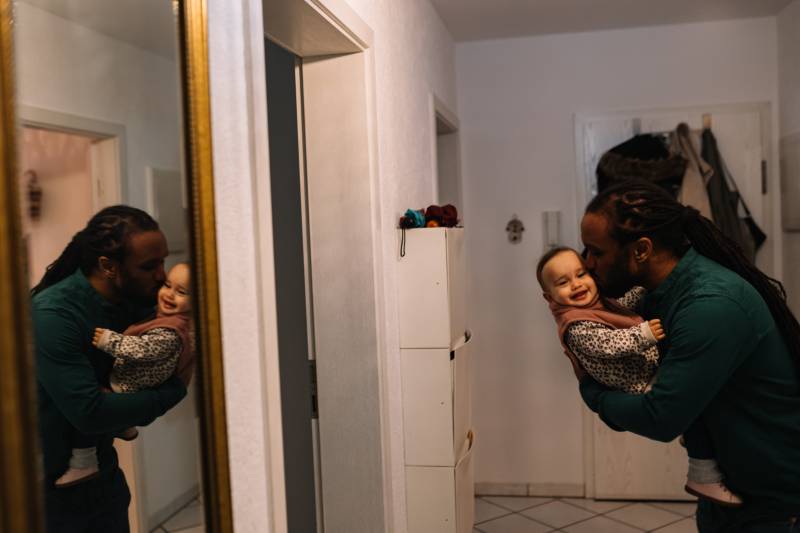When we first met, last December, Kurt told me he had been repaying his loans consistently since late 2003, and he knew that if President Biden’s big plan to erase hundreds of billions of dollars in federal student loans could survive a barrage of legal challenges, it would erase every penny of his remaining debts. (Pell Grant recipients like Kurt would have qualified for $20,000 in debt cancellation.)
“That’s going to make an immediate effect,” he told me back then, “and I don’t have to sit here and think about whether I qualify under all these complicated formulas.”
But I was thinking of complicated formulas, because Kurt and I both knew Biden’s grand plan for debt relief was no sure thing. And I wondered if Kurt’s loans might qualify for another, lesser-understood form of debt relief that did not have to survive the courts.
At the end of our chat, I asked Kurt to send me every record of every payment he’d ever made. The plan was to manually tally his payments, all 19 years’ worth, to see if he qualified for this other kind of relief.
Some borrowers might have been daunted by having to excavate so many records from multiple loan servicers. Kurt agreed eagerly, with a laugh.
The sleeper debt relief that’s helped thousands of borrowers
Before I met Kurt, in April 2022, NPR published the damning findings of a monthslong investigation into federal, income-driven repayment plans (IDR).
These IDR plans were meant to help lower-income borrowers by pegging their monthly payments to their income: The less they earn, the less they have to pay each month. They were meant to be an engine of good and to keep struggling borrowers from defaulting on their loans.
But NPR revealed a list of shocking problems that were hurting, not helping, borrowers. Though these plans promised loan forgiveness after 20 or 25 years, NPR found that some loan servicers weren’t counting payments, meaning they had no idea if, or when, a borrower qualified for forgiveness. Servicers were also miscounting payments, not always giving borrowers credit.
On top of that, advocates had been sounding the alarm for millions of borrowers who could have benefited from these repayment plans — like Kurt — but were never told about them or, worse, were put into forbearance instead.
IDR had become a debacle of good intentions.
Two weeks after NPR released its investigation, the Biden administration committed to a sweeping IDR overhaul, promising to review the payment histories of millions of borrowers, find and fix these mistakes, and give borrowers retroactive credit toward IDR’s promise of loan forgiveness.
Basically, a monumental do-over.

Which brings us full circle to Kurt Panton, who’d been repaying his loans for 19 years when we met. Under this do-over, he could technically qualify for loan forgiveness in one more year. Technically. But no one quite understood how or when this do-over would happen, and the U.S. Department of Education was still completely focused on the fate of Biden’s larger debt relief plan.
After that first Zoom, last December, Kurt pulled together his entire payment history. We kept in touch through spring, as I plugged hundreds of his payments into a spreadsheet. In June, the Supreme Court struck down Biden’s big relief plan. Kurt’s Plan A was gone. It was time to put Plan B to the test.
Kurt and I hopped on Zoom again in August. This time, Pauline was about 10 months old, and she sat on his lap as I showed them the spreadsheet I’d made.
“We’re having fun talking student loans! I hope you never have to pay student loans, little one,” Kurt said to Pauline, laughing.

To qualify for forgiveness under the IDR do-over, a borrower needs to have been in repayment for 20 years, which is 240 monthly payments. By our count, Kurt had made 233, though that was a conservative estimate, ignoring a few months that had disappeared with servicers’ poor record-keeping.
“You are so close,” I told Kurt as we moved down the spreadsheet.
“I am so close!” he laughed back. “When you were scrolling down on the spreadsheet, I was like, ‘Please get to 240, please.’ And then I saw 233 and I was like, ‘Nooo!’”
The good news for Kurt was that the Education Department had recently announced the first round of reviews under this IDR do-over and said it would be erasing the loans of more than 800,000 people — just like him (a number that would continue to grow). All he had to do was wait seven more months, at the most.
Turns out, it was a lot less than that.
“I think I’m done, Mom!”
In the middle of November, Kurt woke up early with Pauline, who had a cold. He fed her, changed her diaper, and lay down on the couch with her, hoping she’d fall back asleep.
“She’s lying on my chest on the couch,” Kurt says, “and I really can’t go back to sleep that quickly. So I check my email, and as soon as I saw the subject I thought, ‘Oh my God, this is it!’”
The email was from the Education Department, and it said that under that big IDR do-over, Kurt now qualifies to have his remaining $18,000 in loans forgiven — 20 years since his first payment.
When I ask Kurt how he’ll celebrate, he calls his mom, Barbara.
“I am very, very proud of you,” she says, suggesting maybe now Kurt will consider going back to school to work on a doctorate.
“I don’t think so,” Kurt says, laughing. “I think I’m done, Mom!”
After Kurt hangs up, his wife, Lizzy, grabs a small, twist-top bottle of bubbly from the fridge, and they toast the email that says Kurt’s loans will soon be in his past — while his future sleeps quietly in the other room.




